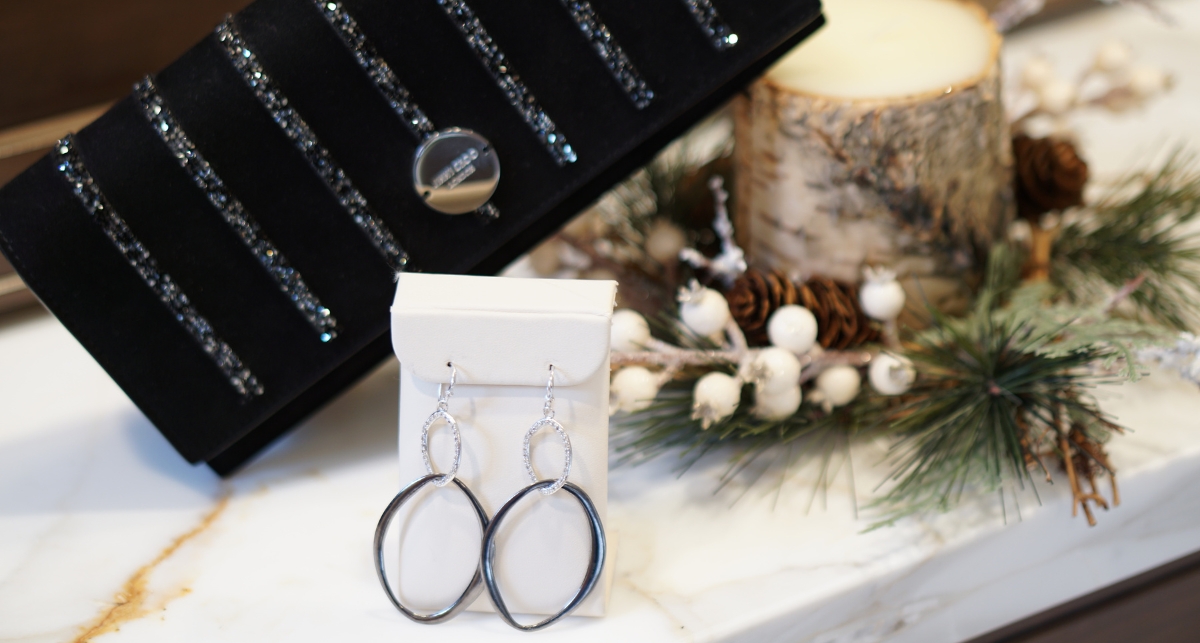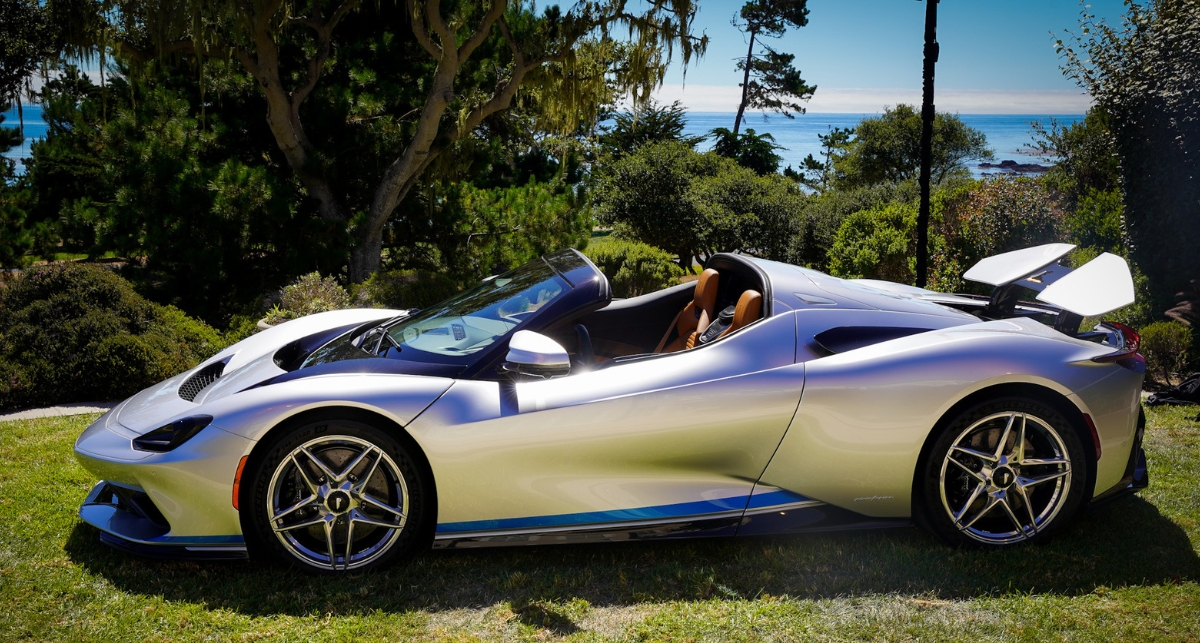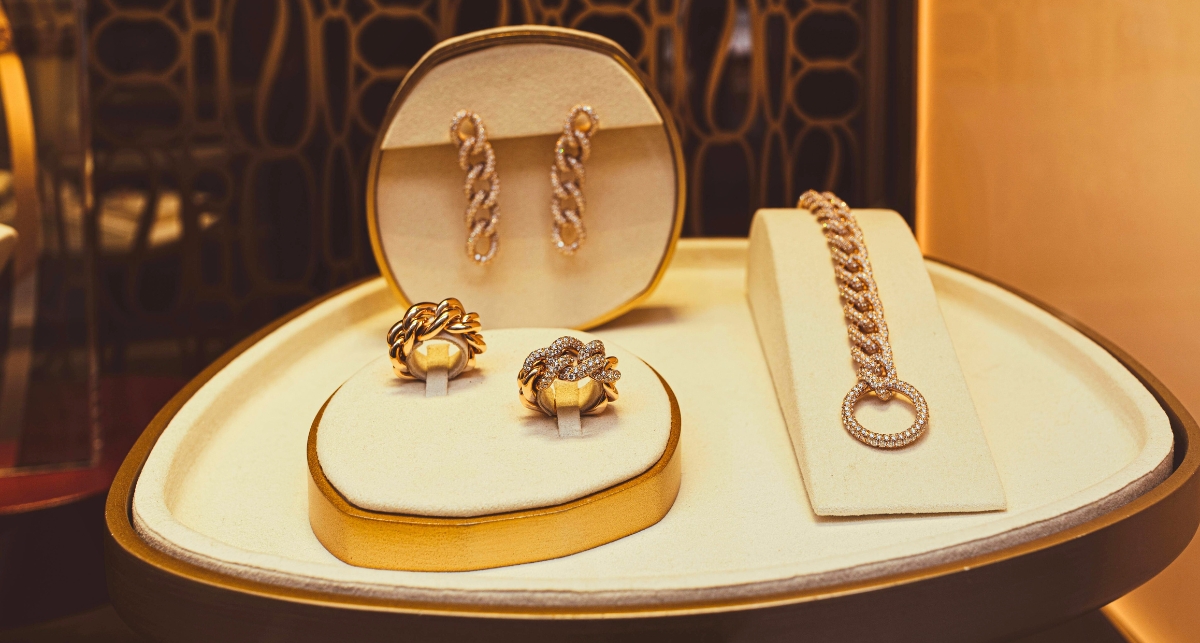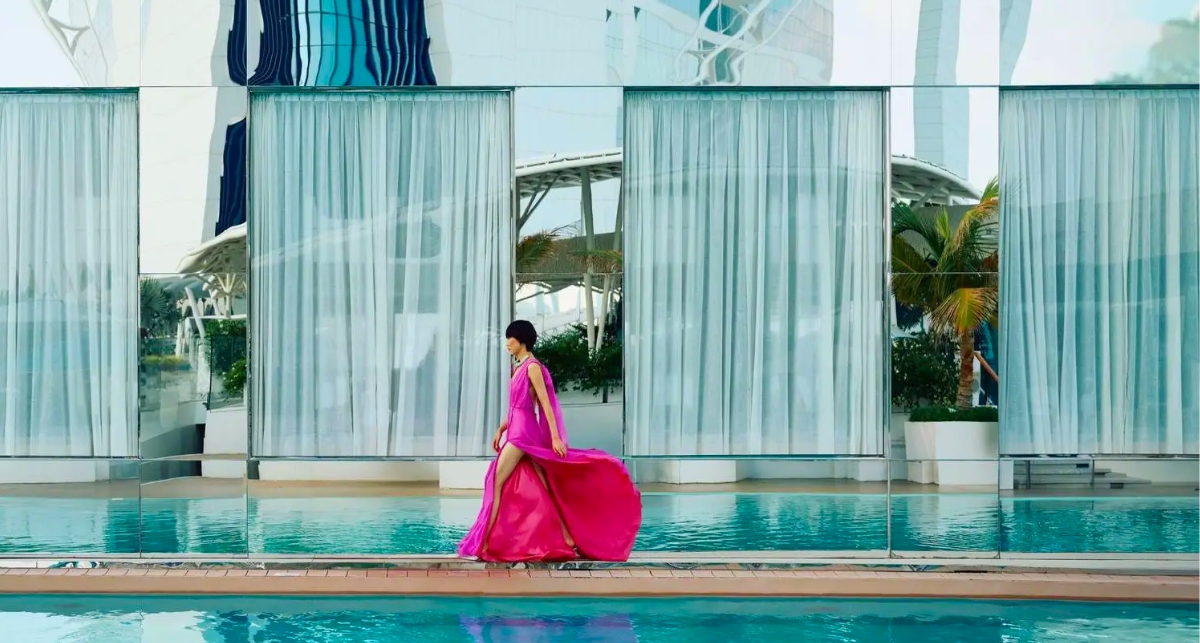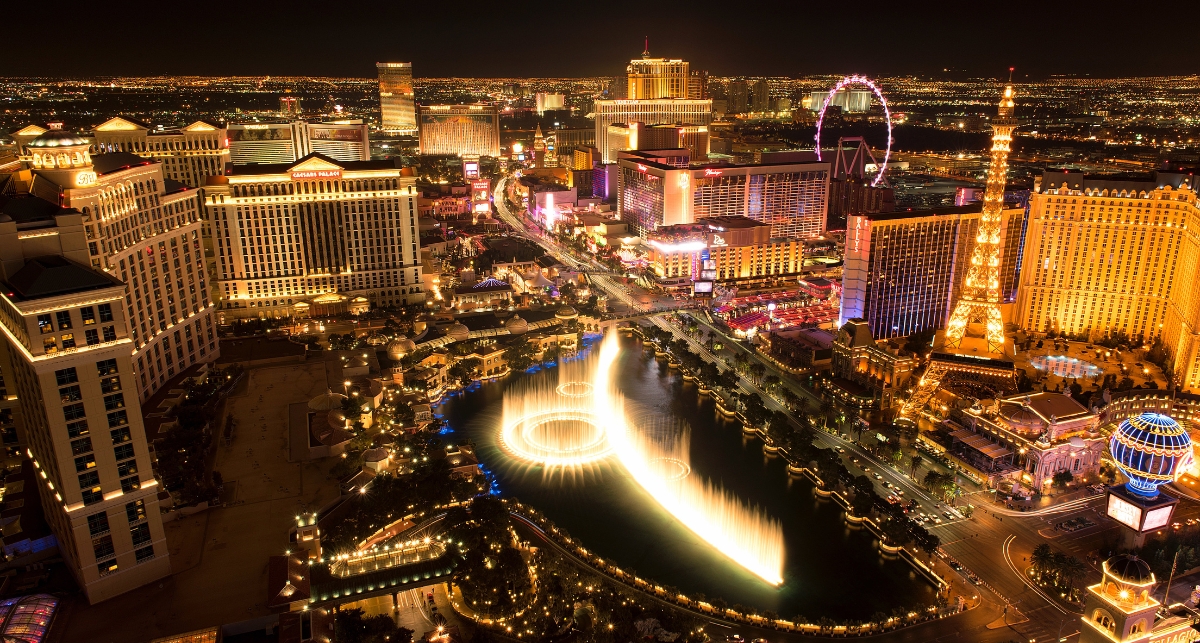During Monterey Car Week 2024 in August, Maserati brought modern Italian style, congenial hospitality, and super-speed performance to the notable multi-day event.

In addition to debuts of the Maserati GT2 Stradale (a road-level version of the GT2 racer) and MC20 Icona, the company highlighted the impressive performance of the track-only Maserati MCXtrema (also known as the “Beast”), which made its first live-action appearance zipping around the corkscrew at WeatherTech Laguna Seca racetrack in Monterey, California.

The company also set up a spacious and luxurious contemporary estate in Pebble Beach to act as the “House of Maserati”, which created a refined and relaxing atmosphere for special guests and valued customers. At the property, several beautiful cars, including the MC20 Cielo, Folgore, and MC12 Special Edition were prominently on display.

Between the global debuts at The Quail, the exciting delivery of the MCXtrema to its first customer at the racetrack, and Maserati’s stately presence in Pebble Beach, the brand made a powerful statement by showcasing its strength, speed, and glory through on-the-track showmanship and its amiable charm and charisma by way of off-the-track hospitality.

A Brief History of Maserati: Creating a Legacy of Style & Innovation since 1914
While I’ve admired the company (as I’ve gotten to know their team over the past several years), and have always had an affinity towards their lineup of sophisticated and chic supercars, to be honest – I didn’t know much about the history of this storied brand, until last year, when I interviewed several top executives and even serendipitously met an Orsi family member (whose family used to own the Maserati brand for many decades).
You can read the full article here, but to sum it up – I learned that Maserati was founded in Italy in 1914 by Alfieri Maserati, and it quickly established itself as a symbol of Italian style and engineering prowess. Over the past century, the brand has undergone many changes and even different owners and top executives. In 2021, Maserati was acquired by Stellantis, a leading multinational automotive group that owns multiple auto brands, which has also influenced the company’s direction, including a change in executives there, most recently.

Maserati at Monterey Car Week 2024
On Saturday, I visited the House of Maserati to meet with Giovanni Perosino (Global Head of Marketing & Communications), Klaus Busse (Global Head of Design), and Rita Case (President of Rick Case Automotive Group, which owns a top-performing Maserati dealership in Florida) to discuss the recent debuts and their strategies to grow their sales and exceed customers’ expectations.

Having covered iconic hypercar and supercar brands for several years (annually at Monterey Car Week), I’ve come to learn that the brands that often have the greatest legacy and ability to persevere over decades, if not centuries, are the ones that stay true to their core while evolving with the times. But, to me – it extends far beyond the designs, as that’s only the product.
As many of us have been taught, successful brands don’t just sell a product, they sell an outcome – or for that matter, an experience or feeling. In my opinion, Maserati is doing just that, through experiential marketing, such as this event – to create a deeper connection between their community with the brand and its products.

The House of Maserati Creates a Modern-Day “La Dolce Vita” Experience for Supercar Enthusiasts
The moment you walk into the House of Maserati, you feel the warm and welcoming atmosphere they create – a very ‘la dolce vita meets modern elegance’ vibe.
Imagine a tranquil afternoon in Pebble Beach, relaxing on the patio by the firepit, listening to live DJ music, and enjoying refreshments and the view of gorgeous supercars with the backdrop of the picturesque golf course. The air is filled with music and laughter, and you can overhear people joyfully sharing stories and catching up with old friends. After unwinding at the house, you decide to zip away for a leisurely drive along the famed 17-mile Drive in a sporty MC20 Cielo, catching glimpses of the waves crashing and seal lions frolicking about.
Life is good here – and that’s exactly the way they want you to feel. The House of Maserati is an extension of the brand’s DNA, in the best way. It personifies what Maserati is all about while welcoming you into an exclusive club that makes you feel included. And, that, in essence – is true Italian hospitality.

Experiential Marketing Drives Maserati Forward While Steering Consumers Toward Their Iconic Brand
In this era, event marketing is often the best type of branding strategy you can do, going beyond a captivating social media campaign and strong digital presence. From what I’ve seen, companies that create a lasting impression in consumers’ minds these days, do that by jumping out of the screens and into our realities – creating memorable experiences that bring brands to life.
But here’s the thing – this isn’t just another corporate-masterminded strategy to woo customers and win people over, it’s actually at the heart of who they are. The Maserati brand (and the company that runs it), similar to Italy, is all about celebrating life. In its simplest terms, it exudes the essence of true Italian luxury, style, and innovation.

When I think of Maserati, I envision fast and powerful sports cars (as evidenced by the MCXtrema and other models), combined with a romanticized personification of the historic brand.
During our chat last year, I vividly recall Klaus painting a mental picture for me about taking a drive through the Italian hillsides, venturing from one town to the next. As he spoke, I imagined driving a glamorous Maserati there – winding up and down through verdant valleys, from Tuscany to another lush destination.
To me, that idea personifies what the brand is all about – the daydream of a picturesque getaway, exploring an enchanting landscape, in a stunning car, of course.

That said, here’s a peek into what I discussed with Giovanni, Klaus, and Rita this year at Monterey Car Week this year.
Interview with Giovanni Perosino, Maserati Global Head of Marketing & Communications
With an impressive background working in senior positions at Lamborghini, Audi, and VW, in January 2024, Maserati hired Giovanni Perosino to act as its new Head of Marketing & Communications. Given his extensive history in other notable brands, he comes with vast experience and knowledge relative to supercharging brand awareness and sales funnels for luxury automobiles. To learn more about he is planning to help guide Maserati, at this year’s event, I spoke with Giovanni about the company’s sales and marketing strategies.

CLP: To start with, could you shed light on your vision for enhancing brand awareness and expanding Maserati’s market presence while preserving the brand’s essence, which has captivated enthusiasts for decades?
GP: “When you talk about the identity of a brand, awareness is the first one. But then the question is, by which audience? To steer global awareness, we are placing a strong focus on luxury audiences including high-net-worth individuals, and defining our audiences by regions. Region, in my definition, is the US, Europe, and Asia. For example, Pebble Beach represents 100% of the strategy for a brand like Maserati, as we need to be where our audience lives, plays, and shops, and that’s exactly one of these areas.
It’s fundamental to be here because now, after 4 days with all the attendees, it has become clear what Maserati wants to do because we came to the right place with a clear message. We presented the North Star direction of the brand yesterday when Maserati was here with the MC Xtrema, Stradale, and MC20 Icona – the 20th anniversary of MC 12. The brand’s North Star shows this performance and the sporty dimension of the brand is where we want to go or where we were, where we are, and where we will be after 110 years.
On top of that, here where we are physically in this moment, in the House of Maserati, that’s the world of Maserati. So first, it is a house because, in Italy, the art of welcoming is part of our culture. So for us, it’s fundamental to create a place where our customers and key entities are welcome. That’s more part of our culture. You see, the brand that talks with an aesthetic, with a lifestyle, and, of course, you see our beautiful products that perfectly fit into this context.”

CLP: With evolving preferences in the rapid shifts in the luxury market, how do you envision Maserati’s current models evolving to maintain a seamless balance between this timeless elegance and contemporary innovative features that allure this new generation of buyers?
GP: I like that you took the concept of effortless elegance because this is what I would like to project in the future. I think that elegance is what I would like to see in every Maserati in the future., just as a line for style. Because, when you choose an Italian luxury brand, design comes out as the first reason. So, we need to continue to keep design-obsessed, because that’s the core reason to choose one of our cars. Our cars should have a good level of performance, but on top of that – the design and style components are the things that will ultimately make you choose our cars.
GranTurismo is a concept (meaning “Grand Touring” in Italian), while also being the name of one of our cars. But, it’s an idea, so I call it the ‘Gran Turismo Factor’. That means – Gran Turismo is the brand positioning, which Maserati stands for. When you drive an MC20, Gran Turismo will give you a level of confidence, security, and a sense of smooth connection with your car. We want it to be easy to drive, so you can feel confident in it. Essentially, Gran Turismo is fantastic comfort.”

CLP: The economy and unforeseen circumstances often pose challenges to even the most established brands. How do you equip Maserati to navigate uncertain waters – such as the environment that we’re in – while harnessing resilience and adaptability to emerge stronger than before?
GP: ‘The future, of course, and the challenges are immense for everybody. What makes us optimistic is that there is still a big request for luxury. The segment of luxury, generically speaking, continues to grow, and we are the world of Italian luxury. Yes, we will be challenged to keep a portion of this segment growing, but at least we are in a place that has a potential future.
It’s also up to us to give the proper interpretation of the world of “Italian luxury” and to become a protagonist in it. We think that to do that, we have to truly understand the foundation of what Italian luxury is, as it’s based on craftsmanship – a trend that will become even more predominant in the future. Less industrialization, more craftsmanship. When you look at the things we do best, we put together components – elements, materials, colors, etc., in a way that exudes effortless elegance.
And, on top of that, we like also to think that we, as the Italians that people know, are always smiling. So, yes – we call it “Allegria”. So, passion and allegria. Be happy, because, when you drive a Maserati on the 17-Mile Drive, you smile.”
Interview with Klaus Busse, Maserati Global Head of Design
Aside from the marketing side of the company, one of the key components of any automotive brand begins with the products themselves. To discover the inspiration behind and process they underwent to create these striking new vehicles, at Monterey Car Week 2024, I caught up with Klaus Busse, Maserati Global Head of Design, with whom I spoke at great length last year.

CLP: Last year, we touched on your design philosophy. And now with the introduction of the MC20-derived Super Sports Car, how has your approach evolved, especially in terms of integrating modern technology with Maserati’s iconic design heritage?
KB: “The approach is still the same, but, on this particular car, the GT2, it required less of a philosophical debate. What I mean by that is when we designed the original MC20, it was, a white paper approach. That car didn’t exist. It didn’t have a predecessor. It happened to be the first Maserati under my responsibility. So, obviously, there was a lot of debate over weeks and months of what this car could mean for the brand and how we should reposition the brand, etcetera, with the car, if necessary. There was a lot of this philosophical debate. The GT2 Stradale was such an obvious thing to do because, when we had the MC20, it was such a wonderful performance package.
We took it to racing. We’re in our 1st season, and we’re on the podium every single race, we’ve had already multiple race wins in our very first season. So, this was a no-brainer. It was an obvious choice to take the car to the road and make the Stradale version. But now one thing did indeed pay off because when we designed the base MC20, we decided consciously we wanted a very clean, pure design – the most elegant supercar out there. And, because the base package is so pure, so elegant, if you add all these performance components – the wing, the exhaustors, the big splitter – it doesn’t kill the design; it just amplifies it into a performance direction. I’m super excited about the result.”
CLP: The MC20-derived super sports car draws inspiration from the Maserati GT2. What were the specific design elements from the GT2 that you aimed to incorporate, and how do they enhance the car’s performance and aesthetics?
KB: “Obviously, it’s all about performance. That’s the only thing that was in our minds. But at the same time, we wanted to make sure that it complements the style of the car. The main goal was creating downforce, and we had a really big target, and the result is actually that we created 800 lbs. of downforce. We did that with 3 elements – the front with that big splitter, the big carbon fiber air exhausts on the hood, and the big massive wing on the back. When we did the the front splitter, we quickly realized we could not maintain the current face of the car because of the changes we wanted to make to get the performance, including additional brake cooling, we couldn’t just, modify the existing design. So, we had to redesign the front, and that gave us the possibility to evolve the face of the car, which gave it a more assertive look. That was a wonderful design opportunity for us. All these elements are purely with performance in mind, but we used them to also amplify the overall car.”

CLP: In celebration of the 20th anniversary of the 2004 MC12 Stradale, which I’ve learned was the fastest Maserati road car ever made, the MC20 Icona limited edition series pays homage to this iconic car. What design cues did you carry over from the MC12 Stradale, and how have you modernized these elements for today’s audience?
KB: “The important thing is that the base MC20 has one super cool technical part, which I don’t think we talk often enough about. The V6 engine in the MC20 is half the size of the v12 of the MC12, yet it produces the same amount of horsepower as half the size of the engine. I think it’s just absolutely amazing what our engineers in Modena have accomplished with this. Now, if an engine is half the size, that means you now have half the weight, so you can mount it low and deep into the car, and that’s why the car handles amazingly. When people ask for v12, don’t forget that those engines are big and heavy, and it jeopardizes the performance of the car. That’s the underlying technical DNA of the car, to begin with.
Then what we did, specifically to celebrate the MC12 road version, which has this wonderful combination of white and blue, goes back to the birdcage racing teams in the early 60s that introduced the white and blue combination. We applied a modern interpretation of this iconic style, and that’s what we did to celebrate this special edition.”
![]()
CLP: Last year, you introduced us to the MCXtrema, which is Maserati’s bold and dynamic track-exclusive vehicle. How does designing for a track-only car differ from designing for a road car, particularly in terms of aesthetics and functionality?
KB: “There are 2 main components. Number 1 is performance, performance, performance. Number 2 is I can apply a different mentality than I usually do for our road cars.
For this, we deliberately wanted something more menacing and aggressive on the track, as it needs to have a presence. And when we showed the model car for the first time to our management, they said ‘What a beast!’, So that’s how it became the name of the car – the beast of modern art. Of course, everything is about the performance of that car. It was actually the first Maserati ever to be designed 100% on the computer because we were in real-time connection with the engineers and the aerodynamicists. So when we would create a surface, it would go directly into the simulation computer, and they would tell us, ‘Change the angle by 1 degree, one minute up and down, etc.’, so we could really get that downforce in the performance.
You can have a showroom with so many different-looking cars, and yet they all have to represent the brand.”
CLP: Interior elements play a crucial role in defining the luxurious feel of a Maserati. Can you discuss the process of choosing the sumptuous materials and design details for the interiors of these models and how they contribute to the overall driving experience?
KB: “To start with Italy is, as you know, a country of fashion and luxury, and, as an Italian car brand, we try to bring that to our customers through our automobiles. We offer expected choices such as beautiful wood with laser engraving, fantastic super-smooth leathers, and even some of our models from details that look like luxury handbags. With our Italian creativity, we turn each element into art. For example, the seats are leather, but the inserts are recycled nylon and they’re created with laser etching, which is programmed by Italian engineers. So, you could say there’s the Michaelangelo part, which is the expected sculpture, and then there’s a Leonardo da Vinci part, which fuses science with art.”
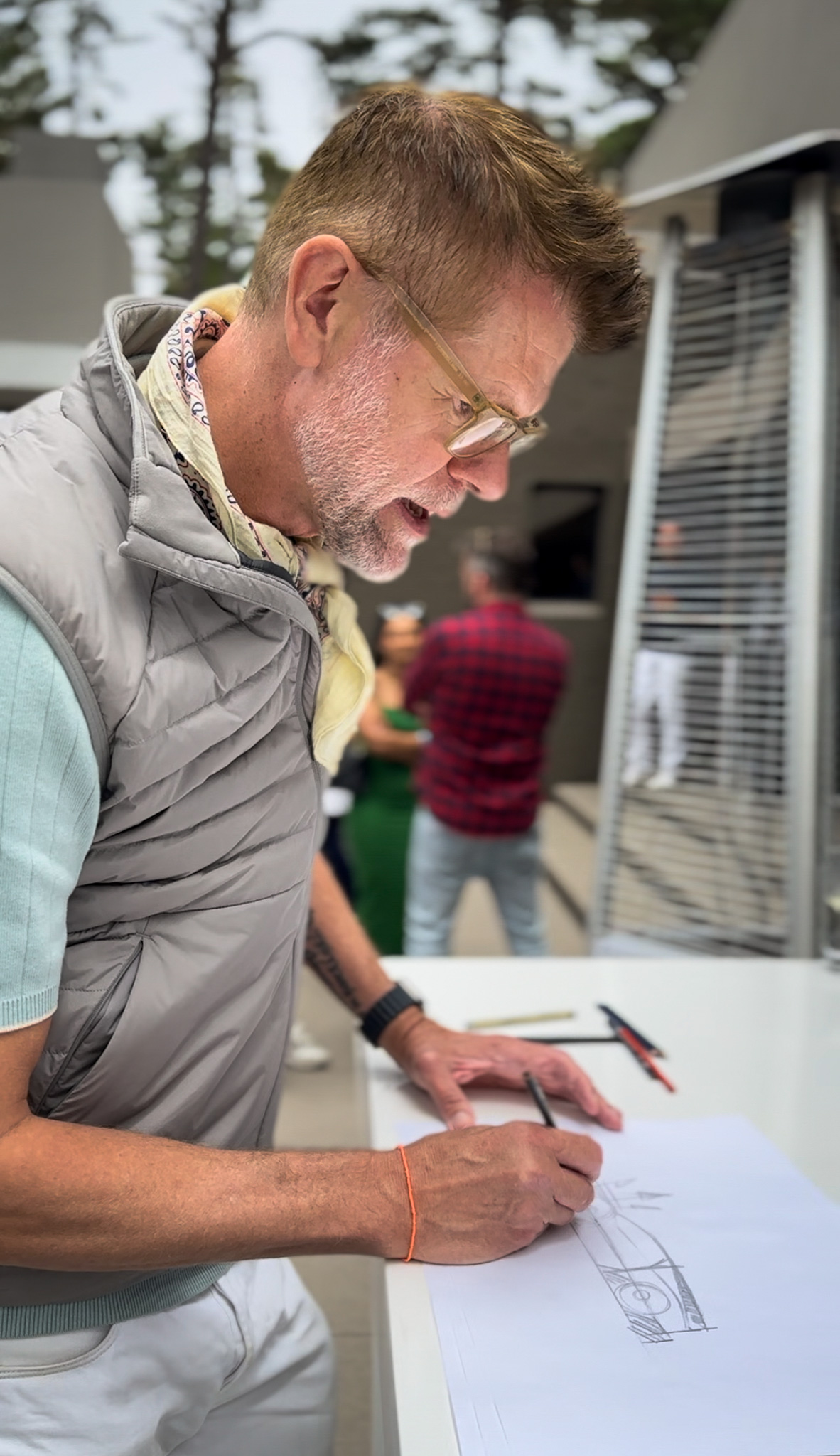
CLP: Maserati thrives on craftsmanship and dedication. How do you continually guide your teams to interweave these values into every aspect of the brand from design to production, infusing the soul of Maserati into each masterpiece?
KB: “‘It’s so easy to say Maserati is only about road cars, like the beautiful cars of the 50s and 60s, but then you can quickly fall into the trap and say, ‘Oh, we’re gonna just continue to celebrate that time’. And while we respect that time, you need to go back a step earlier because, for the first 30 years, we only built race cars. And you cannot win a race if you’re sentimental or romantic. So, we need to do the best we can, in the moment, and that is the spirit that guides us. I’ve been with our team for nine years now, and we continue to try to inspire each other. It’s my job to keep evangelizing new ideas within the company. But it’s the spirit of ‘Let’s keep pushing!’ that keeps us going.”
Interview with Rita Case, President of Rick Case Automotive Group & Rick Case Maserati
Because every supply chain needs a great sales team on the frontline, at this year’s event, I caught up with one of Maserati’s top dealers, Rita Case (President, CEO, and Owner of The Rick Case Automotive Group, the nation’s largest retail auto group owned and operated by a woman), to discuss their dealership’s strategies for building strong relationships with customers and driving sales of Maserati cars. Running one of the top-producing auto dealership groups in the country, Rita has received national recognition for her leadership in the industry including prestigious awards such as TIME “Dealer of the Year”, “National Dealer of the Year” by USA Today; and Automotive News “Outstanding Women in the Auto Industry”.

CLP: Rick Case Maserati stands out as one of the top-performing Maserati dealerships in the USA. Could you share some of the innovative advertising and marketing strategies that you’ve driven that have driven your success in promoting the Maserati brand and elevating its presence in your market?
RC: “We have a brand; Rick Case has a brand. When we opened the Maserati store 9 years ago, we immediately had a notoriety for Maserati because the Rick Case brand was so well known. Having the largest volume Honda store, Volkswagen store, and, the largest volume Acura store, etc., we were so well known in our region, so it was pretty easy to introduce Maserati.
Although we hadn’t been at that high level of a premium luxury sports car in the past, people just right away said ‘Well, if Rick Case is selling Maserati, it must be a good brand because they’ve always stood behind the brands they represent and have been recognized for selling great products.’ So I think that helped launch us. Our Rick Case brand helped launch the Maserati store to become the number one volume store in the country for Maserati.
We believe in the product and Italy’s commitment to its styling, the power train, engineering, and what Klaus has done with the design.”

CLP: While the auto industry tends to be male-dominated, do you have a unique perspective as a female in a leadership position that’s influenced your success?
RC: “I do, and I think it’s that I leave my ego at the door. I mean, you simply have to leave your ego at the door. We’re not competing; we are partners. I’m partners with my customers, with the factory, and with my vendors. I feel that to win – I do so by leaving my ego at the door, being a good listener, coming prepared, being willing to compromise and negotiate, and meeting halfway in the middle. Naturally, I’m empathetic; it’s part of my nature. As a mother, a wife, and a leader, when you combine all of those, you’re just going to be a little bit more patient and a good listener, but you still have to be a strong negotiator, because we don’t want to lose.”

In addition to discussing business and leadership with her, I also observed Rita sharing valuable and honest feedback about performance and pricing with Maserati’s top executives at the event.
When it comes to the supply chain, you’re only as strong as your weakest link. In addition to this, it’s essential to have a good open line of communication with each party, as it improves the outcome since every part of the chain has a different perspective. Aside from employing an outstanding design team and visionary marketing team, having a powerful sales force, including top-producing auto dealers (such as Rita’s company), is imperative to help steer a brand to long-lasting success. That’s why Monterey Car Week and these types of events enable various sides of the brand and business to come together to discuss important matters, with the mutual goal of improving their offerings and refining their strategies for future success.
As evidenced by Maserati’s presence during Monterey Car Week 2024, the company made it clear that they’re geared up to drive sales and improve performance over the next year.
If you enjoy learning about stories of Monterey Car Week, follow along on MSN and Instagram, as I’ll be sharing more Car Week articles featuring in-depth interviews with industry leaders, C-level executives, and head designers from notable brands over the next couple of weeks.

[Photography assistance by Brooke Damnavits]









